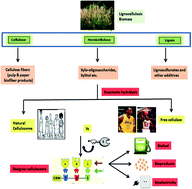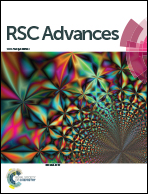Lignocellulose processing: a current challenge
Abstract
Lignocellulosic biomass, of which inedible crops are a renewable source, is expected to become one of the key renewable energy resources in the near future, to deal with global warming and the depletion of conventional fossil fuel resources. It also holds the key to supplying society's basic needs for the sustainable production of chemicals and fuels without impacting the human food supply. Despite this, the production of 2nd generation biofuels and chemicals has not yet been commercialized. Therefore, the challenges involved in the production of lignocellulosic biomass derived fuels and chemicals must be addressed. The search for economic pretreatment methods has been recognized as one of the main hurdles for the processing of biomass to biofuels and chemicals. The conversion of all biomass components, lignin in particular, would greatly contribute to the economic viability of biomass based processes for 2nd generation biofuels and chemicals. The highly organized crystalline structure of cellulose presents an obstacle to its hydrolysis. Hydrolysis of lignocellulose carbohydrates into fermentable sugars requires a number of different biomass degrading enzymes such as cellulases and hemicellulases. Still, a number of technical and scientific issues within pretreatment and hydrolysis remain to be solved. Depending on the raw material and pretreatment technology, the enzyme mixtures must be designed to degrade biomass carbohydrates. Rapid advances in enzyme, microbial and plant engineering would provide the necessary breakthroughs for the successful commercialization of biomass derived fuels and chemicals.


 Please wait while we load your content...
Please wait while we load your content...